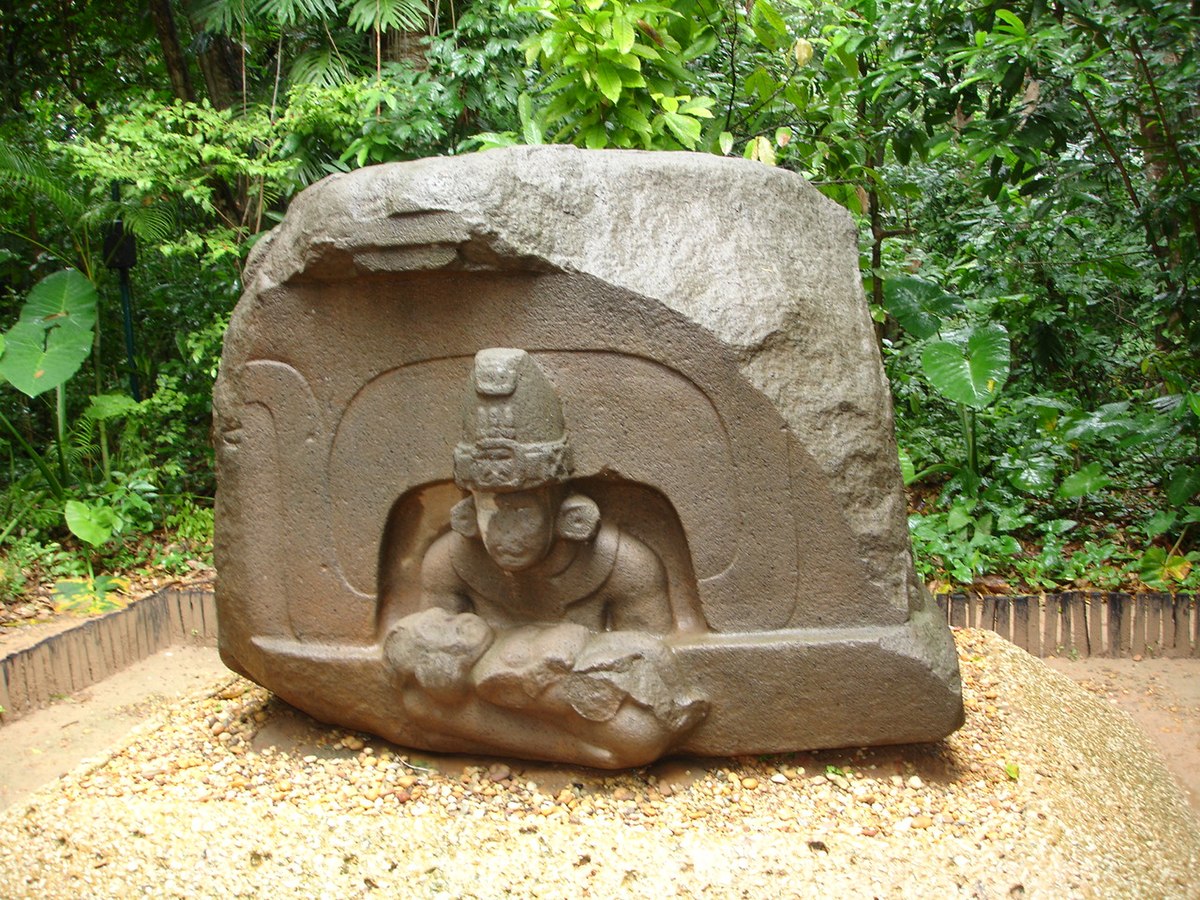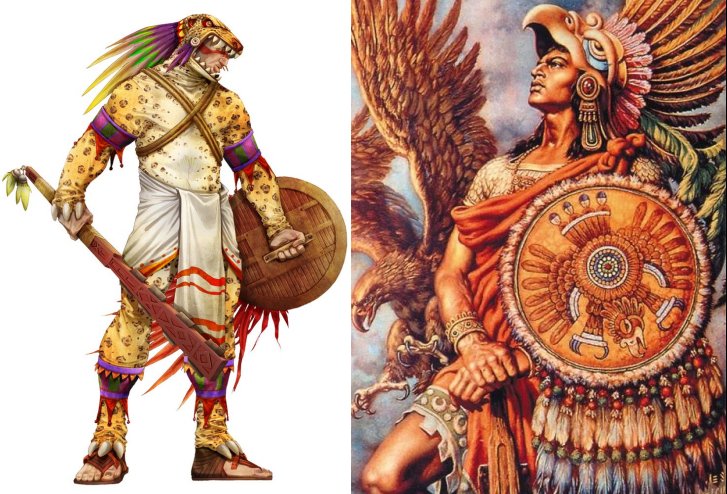Post by 1dave on Jun 11, 2017 11:17:29 GMT -5
1. Olmec c. 1200 BCE to c. 400 BCE
www.ancient.eu/Olmec_Civilization/





Actually there are roughly 365 1/4 days in a year, but the real problem with calendars is that the earth doesn't go around the sun in a circle. It travels in an ellipse with two focal points, with the sun at one, nothing at the other.
As the earth gets closer to the sun it goes faster. as it moves away, it slows down.
The cycles of the moon are functions of the sun, but viewed from earth. Sometimes we see the first new moon 31 days after the last, sometimes only 29.
And then there are those pesky 5 1/4 days. That requires a government employee checking carefully every month to observe exactly when each new moon occurs to keep the nation from careening into chaos!

Around 3,000 years ago the Olmecs were using a sophisticated calendar based on starting with the rising sun with 18 months X 20 days each giving 360 days in a year with a 19th month of 5 days to keep agriculture in order.
It had three parts, wheels within wheels.
The Tzolkin of 260 days is the ‘sacred calendar’ that Quich’e calendar priest Andres Xiloj told ethnographers originally represented the gestation cycle of humans (around nine months), as the period of 260 days very closely approximates the interval between when a woman first stops menstruating and when her child is born [12]. It was also used to predict eclipses because "two tzolkin periods (520 days) equal three eclipse half-years (during which exactly three eclipses will occur)" (ibid p12).
The Haab cycle is the 360-day ‘secular’ calendar plus five extra days at the end of the year that synchronises with the Tzolkin calendar every 52 years. It consists of 18 months of twenty days each plus a nineteenth “month” of five days – the uayeb, and was mainly used for agriculture.
The Calendar Round - a simple combination of the Tzolkin and the Haab calendars, synchronising a 260-day count alongside a 365-day count. Every 52 years or 18,980 days or 73 Tzolkins, it resets to Day 1.

It is represented by 13 months of 20 days, with recognisable glyphs that were used for thousands of years.
The Calendar Round:
About the same time in Bolivia they had a calendar of 20 months with 18 days each.
www.atlantisbolivia.org/tiwanakucalendar.htm

At the same time in Sumeria:
www.atlantisbolivia.org/boliviaandthesumerianconnection.htm

www.ancient.eu/Olmec_Civilization/


The mysterious Olmec civilization prospered in Pre-Classical (Formative) Mesoamerica from c. 1200 BCE to c. 400 BCE and is generally considered the forerunner of all subsequent Mesoamerican cultures such as the Maya and Aztecs. Centred in the Gulf of Mexico (now the states of Veracruz and Tabasco) their influence and trade activity spread from 1200 BCE, even reaching as far south as present-day Nicaragua. Monumental sacred complexes, massive stone sculpture, ball games, chocolate drinking and animal gods were features of Olmec culture which would be passed on to all those who followed this first great Mesoamerican civilization.
An Enigma
The Olmec civilization presents something of a mystery, indeed, we do not even know what they called themselves, as ‘Olmec’ was their Aztec name and meant ‘rubber people’. Due to a lack of archaeological evidence their ethnic origins and the location and extent of many of their settlements are not known. The Olmecs did, however, codify and record their gods and religious practices using symbols. The precise significance of this record is much debated but, at the very least, its complexity does suggest some sort of organised religion involving a priesthood. The Olmec religious practices of sacrifice, cave rituals, pilgrimages, offerings, ball-courts, pyramids and a seeming awe of mirrors, was also passed on to all subsequent civilizations in Mesoamerica until the Spanish Conquest in the 16th century CE.
An Enigma
The Olmec civilization presents something of a mystery, indeed, we do not even know what they called themselves, as ‘Olmec’ was their Aztec name and meant ‘rubber people’. Due to a lack of archaeological evidence their ethnic origins and the location and extent of many of their settlements are not known. The Olmecs did, however, codify and record their gods and religious practices using symbols. The precise significance of this record is much debated but, at the very least, its complexity does suggest some sort of organised religion involving a priesthood. The Olmec religious practices of sacrifice, cave rituals, pilgrimages, offerings, ball-courts, pyramids and a seeming awe of mirrors, was also passed on to all subsequent civilizations in Mesoamerica until the Spanish Conquest in the 16th century CE.



Most ancient civilizations used a calendar of 12 lunar months and 360 days to a year.
Actually there are roughly 365 1/4 days in a year, but the real problem with calendars is that the earth doesn't go around the sun in a circle. It travels in an ellipse with two focal points, with the sun at one, nothing at the other.
As the earth gets closer to the sun it goes faster. as it moves away, it slows down.
The cycles of the moon are functions of the sun, but viewed from earth. Sometimes we see the first new moon 31 days after the last, sometimes only 29.
And then there are those pesky 5 1/4 days. That requires a government employee checking carefully every month to observe exactly when each new moon occurs to keep the nation from careening into chaos!

Around 3,000 years ago the Olmecs were using a sophisticated calendar based on starting with the rising sun with 18 months X 20 days each giving 360 days in a year with a 19th month of 5 days to keep agriculture in order.
It had three parts, wheels within wheels.
The Tzolkin of 260 days is the ‘sacred calendar’ that Quich’e calendar priest Andres Xiloj told ethnographers originally represented the gestation cycle of humans (around nine months), as the period of 260 days very closely approximates the interval between when a woman first stops menstruating and when her child is born [12]. It was also used to predict eclipses because "two tzolkin periods (520 days) equal three eclipse half-years (during which exactly three eclipses will occur)" (ibid p12).
The Haab cycle is the 360-day ‘secular’ calendar plus five extra days at the end of the year that synchronises with the Tzolkin calendar every 52 years. It consists of 18 months of twenty days each plus a nineteenth “month” of five days – the uayeb, and was mainly used for agriculture.
The Calendar Round - a simple combination of the Tzolkin and the Haab calendars, synchronising a 260-day count alongside a 365-day count. Every 52 years or 18,980 days or 73 Tzolkins, it resets to Day 1.

It is represented by 13 months of 20 days, with recognisable glyphs that were used for thousands of years.
The Calendar Round:

About the same time in Bolivia they had a calendar of 20 months with 18 days each.
www.atlantisbolivia.org/tiwanakucalendar.htm

At the same time in Sumeria:
www.atlantisbolivia.org/boliviaandthesumerianconnection.htm


































 ... to the New Guys from The ChatBox V.2 Crew
... to the New Guys from The ChatBox V.2 Crew